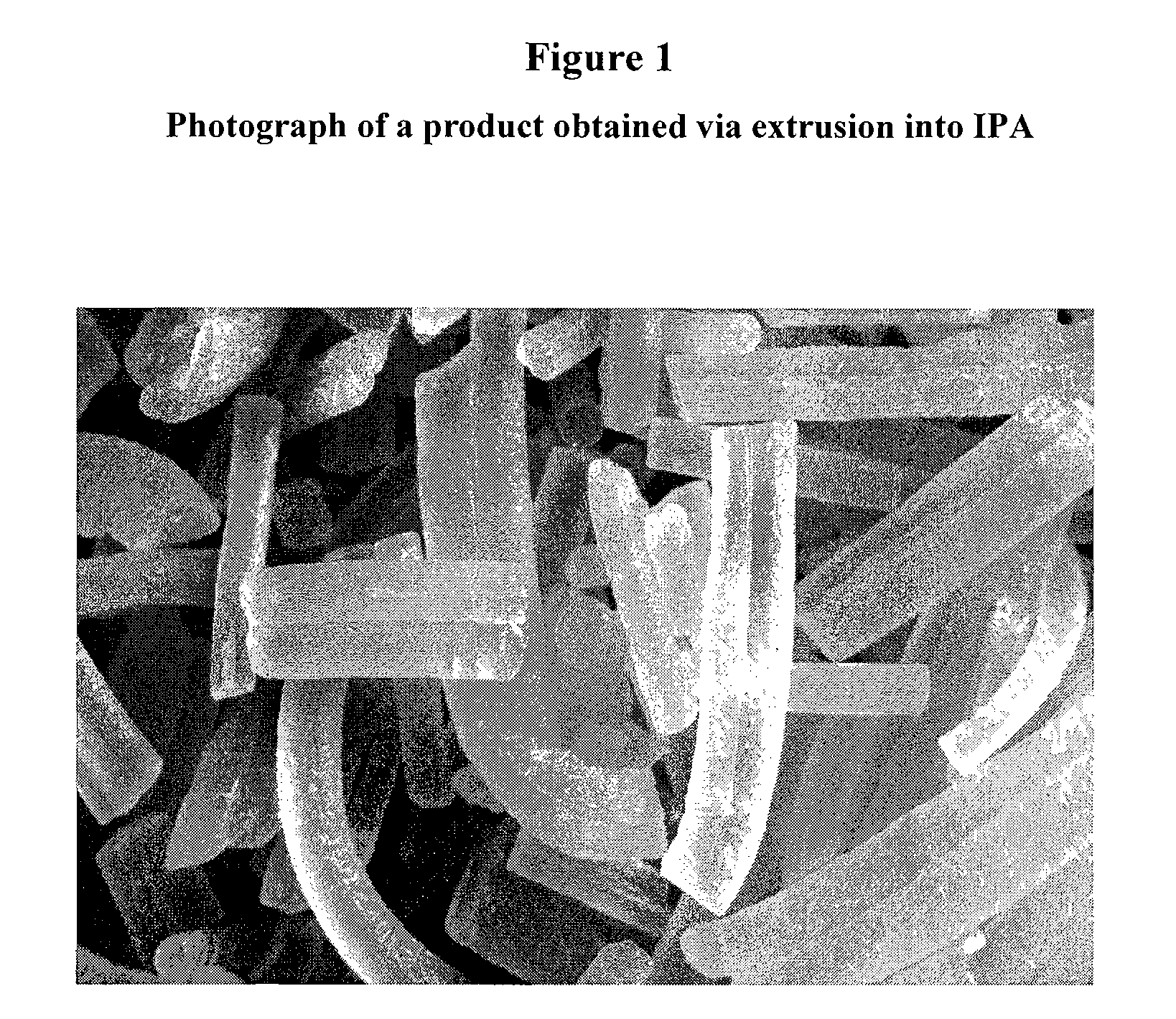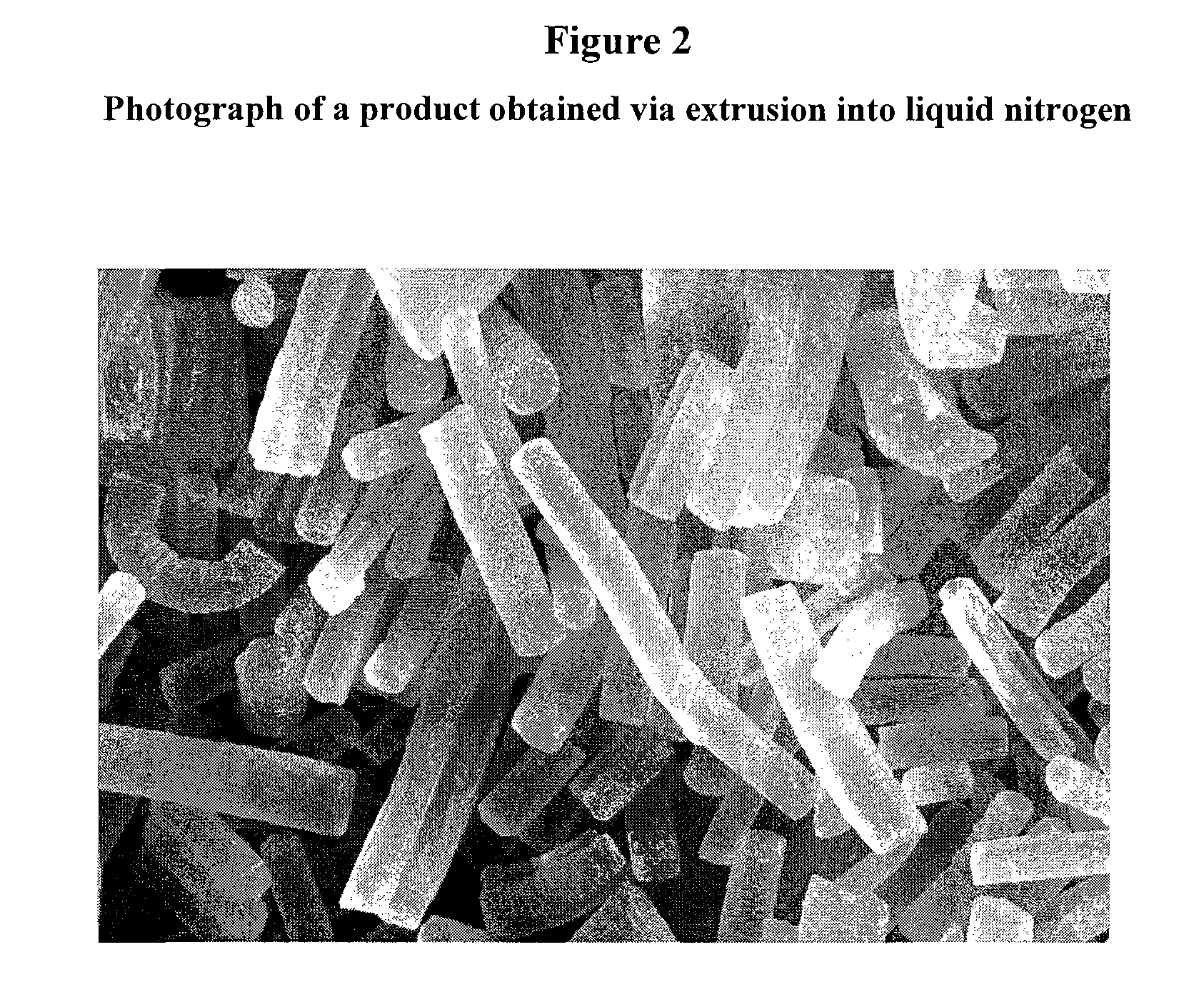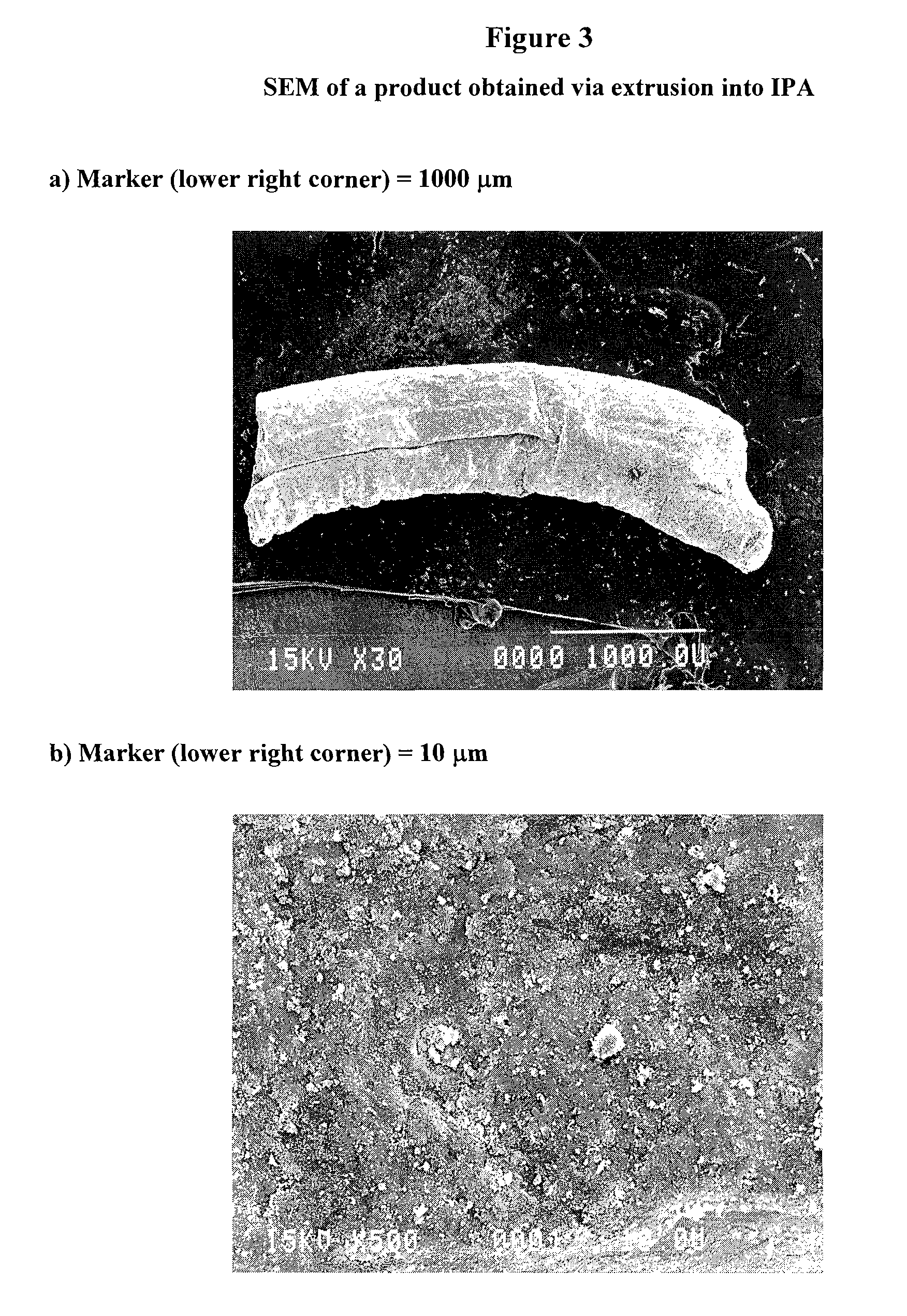Process for the incorporation of a flavor or fragrance ingredient or composition into a carbohydrate matrix
- Summary
- Abstract
- Description
- Claims
- Application Information
AI Technical Summary
Benefits of technology
Problems solved by technology
Method used
Image
Examples
example 1
Batch process according to the invention
[0077] An extruded product was manufactured with the following ingredients, in the proportions indicated, using a batch type process.
Ingredientgrams% dryMaltodextrin 18 DE966046.26Sucrose892042.72Orange oil210010.06Lecithin2000.96Water5220—26100100.00
[0078] The maltodextrin and sucrose were dissolved in water and heated to 130° C. to reduce the water content to approximately 6% by weight. The lecithin was dissolved in the orange oil and then mixed with agitation to form a uniform melt. The mixture was extruded through a die plate with 0.8 mm holes under 3 bar pressure into a basket with 0.5 mm perforations that was immersed in a receiving vessel containing approximately 30 liters of liquid nitrogen. Once the extrusion was completed, the cold strands collected in the basket were removed from the liquid nitrogen bath and placed in a dryer. After drying, 1% silicon dioxide was added as a free flow agent. The final product contained 9.8% flavo...
example 2
Continuous process according to the invention
[0079] A syrup solution of the following composition:
IngredientsParts by weightSucrose40Maltodextrin 18DE40Water20
was pumped at 80° C. into a first heat exchanger, at a rate of 8.0 kg / min.
[0080] Steam (approximately at 150° C.) was supplied to the jacket of the heat exchanger to evaporate water from the syrup. Steam temperature and flow rate were regulated to give the desired moisture content after evaporation. Residence time in the heat exchanger was 2 min.
[0081] The concentrated syrup plus water exited the first heat exchanger into a tank were the water vapor was removed.
[0082] A pump removed the melt from the tank and a flavor oil (mixture of 96 parts cold pressed orange oil, 4 parts lecithin) was injected into the processing line at a rate of 1.5 kg / min. The mixture of melt and flavor oil passed for 10 s through an in-line high shear mixer to form an emulsion.
[0083] The emulsion passed through a second heat exchanger to cool ...
example 3
Comparative example
[0084] Two 20 kg pilot batches of carbohydrate matrices similar to that described in example 1, each containing 10% orange oil, were similarly extruded according to the batch method into liquid nitrogen, respectively isopropyl alcohol (IPA), followed by drying. The process followed was similar to that described in example 1 above.
[0085] The finished products were compared—they appeared the same and had no odor of orange oil. Analysis of the final products showed no difference between the two methods of extrusion cooling with respect to moisture content, glass transition temperature or flavor content. There were no discernible differences of surface morphology between the samples obtained with the two cooling treatments when examined by macro photography or by scanning electron microscopy (SEM).
[0086] Examination by macro photography was done to see if there were visual differences in the finished products of the same matrix in terms of surface gloss, striation...
PUM
| Property | Measurement | Unit |
|---|---|---|
| Temperature | aaaaa | aaaaa |
| Temperature | aaaaa | aaaaa |
| Temperature | aaaaa | aaaaa |
Abstract
Description
Claims
Application Information
 Login to View More
Login to View More - R&D
- Intellectual Property
- Life Sciences
- Materials
- Tech Scout
- Unparalleled Data Quality
- Higher Quality Content
- 60% Fewer Hallucinations
Browse by: Latest US Patents, China's latest patents, Technical Efficacy Thesaurus, Application Domain, Technology Topic, Popular Technical Reports.
© 2025 PatSnap. All rights reserved.Legal|Privacy policy|Modern Slavery Act Transparency Statement|Sitemap|About US| Contact US: help@patsnap.com



